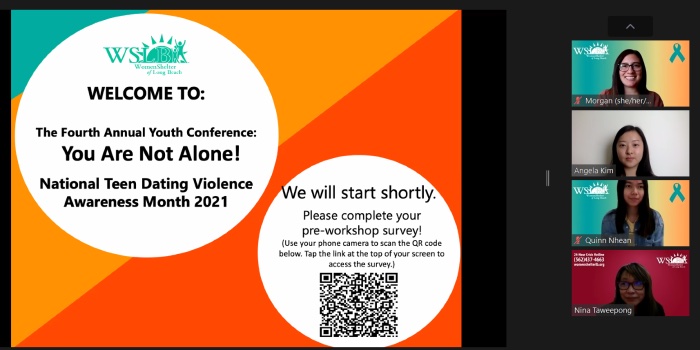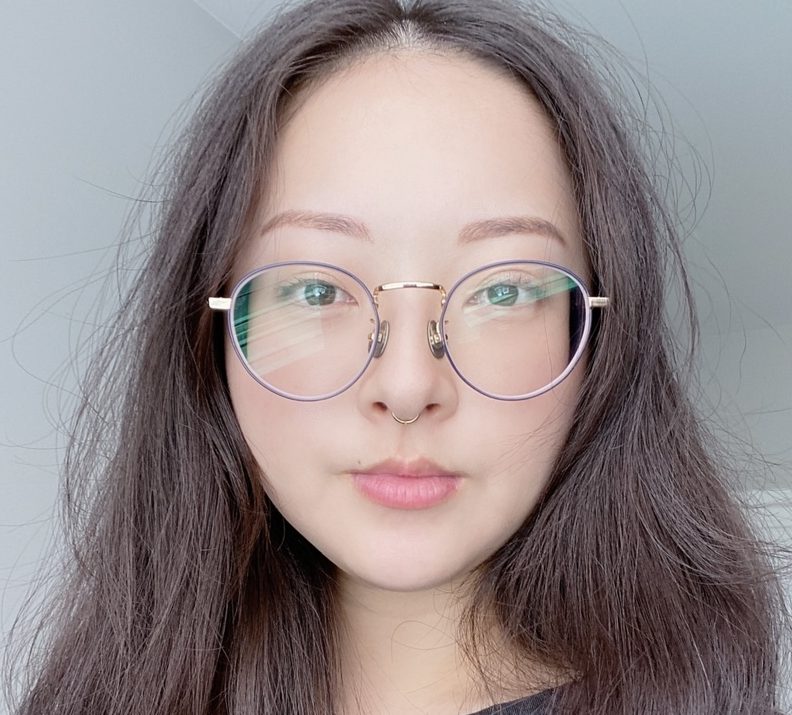by Angela Kim
This is the second in a series of essays by survivors of domestic violence in which they share what they wish others knew, what has helped them heal and how we can prevent violence.
I grew up in love with love. Every Saturday morning, I would go downstairs to my family’s TV room, tightly clutching the “Shrek 2” VHS tape, excited to relive the scene where Fiona decides to permanently transform into a big green ogre to be with her one true love. The next weekend, I’d swap the movie for “Beauty and the Beast,” “The Little Mermaid” or “Sleeping Beauty.” I’d fall asleep imagining a long-haired man on a horse swooping me up from the pensive chronicles of the fifth grade.
But Disney isn’t real life. And because no one had talked with me about what a real, healthy relationship looks like, I didn’t know what to do when my boyfriend became abusive. In fact, I lacked the tools to even recognize the abuse when violence became the norm in my relationship. I eventually escaped the relationship and have spent the last several years healing. But I want to help others avoid what I went through, including preteens and teens who are just beginning to explore relationships.
If I had had a trusted adult to talk with, or more insight into what a healthy relationship looks like, I might have known what kind of person this young man was when he cheated on me three weeks into the relationship. I was sixteen. When I confronted him about it, instead of apologizing, he told me, “You can leave, but no one else but me is going to love you.”
We fought weekly. His compliments turned into passive-aggressive insults. I endured verbal abuse, violent bursts of anger, screaming and intimidation. After each fight, he would suddenly act like he loved me again — a cycle that is common in domestic violence and can make it difficult for survivors to see the truth or leave a relationship. I told myself I could handle it. I wasn’t a quitter. And it didn’t help that those VHS movies had taught me that love meant sacrifice.
I didn’t know that I didn’t need to sacrifice myself and my wellbeing to be loved. Two years into the relationship, weekly fights became daily. I told myself if it ever got physical, I would leave.
One day, it got physical. I stayed with him for another year and a half. When I was 20, I grew exhausted of breaking promises to myself and feeling utterly worthless. My five previous attempts to break up with my abuser were unsuccessful, but this time, I knew this break-up had to be for good.
Looking back, I wish a parent, teacher, Sunday school teacher, soccer coach or really any adult, would have intervened. I just wanted someone to pull me aside and confirm my sneaking suspicion that “this wasn’t normal.”
But no one did. Two years into the relationship, I started seeing a therapist to “fix” what I thought was my fault, my shortcomings. She sat me down and asked me the standard clinical questions. Then she looked me in the eye and, for the first time, I heard the words, “your boyfriend is abusive.”

Since leaving my abuser, I have devoted my professional life to violence prevention. As a survivor of teenage dating violence, my passion is to educate children, teenagers, parents and guardians about healthy relationships and how to have conversations about abuse. Preventing teenage dating violence is not the teenager’s burden to carry — it takes a village.
During the pandemic, when partner isolation rose dramatically for many in domestic abuse situations, I served as the director of outreach and education at the WomenShelter of Long Beach, teaching middle and high school teens about the red flags I overlooked. I realized that most students do not have a clear understanding of a healthy relationship. It is often difficult for young people to judge whether or not a behavior is abusive. Some view violence and abuse in relationships as normal and inevitable, most often due to romantic portrayals in media.
In fact, even adults have a hard time distinguishing what types of behavior are abusive. Remember in “The Notebook” when Ryan Gosling hung from a Ferris wheel threatening to kill himself unless Rachel McAdams went out with him? That was a scene conceived and written by adults, which set many 12-year-old hearts like mine aflutter when it came out in 2007. But it demonstrates textbook abusive behavior, where the threat of self-harm or violence is used to manipulate the other into doing something against their will.
The lack of knowledge about healthy relationships continues into the college years. During my time working with undergraduate students as a community organizer at a university’s women’s resource center, I saw firsthand how many 18- to 22-year-olds have never learned what is healthy when it comes to relationships, sex, consent, intimacy and communication.
You only get one chance at youth, and events in childhood can set a course for the rest of your life. The pre-teen and teen years are formative in establishing behavior patterns that continue into and shape adulthood. Just as youth need to learn the foundational skills of reading, writing and math, children of all ages must learn the building blocks of healthy relationships.
It’s time for middle and high school teachers to stop leaving education about domestic violence to universities. It could be built into the grade school curriculum and discussed in classes such as health, sociology, civics and history. Schools could also hold events during Teen Dating Violence, Domestic Violence and Sexual Violence Awareness Months.
Teaching children about intimate partner violence isn’t only the job of schools. I encourage parents, guardians and even older siblings to talk with children about boundaries and how to articulate these clearly and assertively. For older teenagers, this might involve discussing their power to define their own boundaries around sex and intimacy. Addressing the broader societal problem of domestic violence requires policy and funding changes. But if you want to take action on this issue yourself, begin having conversations about healthy and unhealthy relationships with the children in your life.
As a current employee of the LA County Department of Public Health, I want to remind everyone that domestic violence is a public health issue. Whether it’s infectious disease, environmental factors or domestic violence, the goal of public health promotion is to prevent harm before it occurs. I believe that education about healthy relationships at a young age is crucial to decreasing rates of domestic violence and getting us one step closer to a violence-free world.
Looking back, the intervention I needed most as a teenager wasn’t for an adult to step in and stop my boyfriend’s abuse after it had already escalated. I needed help before that. If a parent or other trusted adult had talked with me earlier about what healthy relationships look like and how to identify abuse, I may never have dated him in the first place.
If you or someone you know is experiencing domestic violence, contact the National Domestic Violence Hotline at 1-800-799-7233 for support and referrals, or text “START” to 88788.
The National Domestic Violence Hotline also offers support, education and advocacy specifically for teenagers and young adults ages 13 through 26. Young people with questions or concerns about their romantic relationships, concerned friends or family members, teachers, counselors and other service providers can reach out through the website www.loveisrespect.org , via phone at 1-866-331-9474, or text LOVEIS to 22522.
This story was produced in partnership with the California Health Report


Interesting enough , this is far to common in our society today and I had learned through relationship therapy that it still is going on somewhere out there and many people are still injured and less likely to be killed nowadays but it scars many children and young adults. Even though we have education and more resources now , we need to wisen up and continue to look out when we still see it happening and reach out to our teens and young adults before something bad happens. I have seen it to much and it is very ugly and I don’t want to hear on the news or pick up the morning paper and read something like this and someone lost their life , it affects everyone.
IT TAKES A VILLAGE TO LOOK AFTER OUR CHILDREN !!!